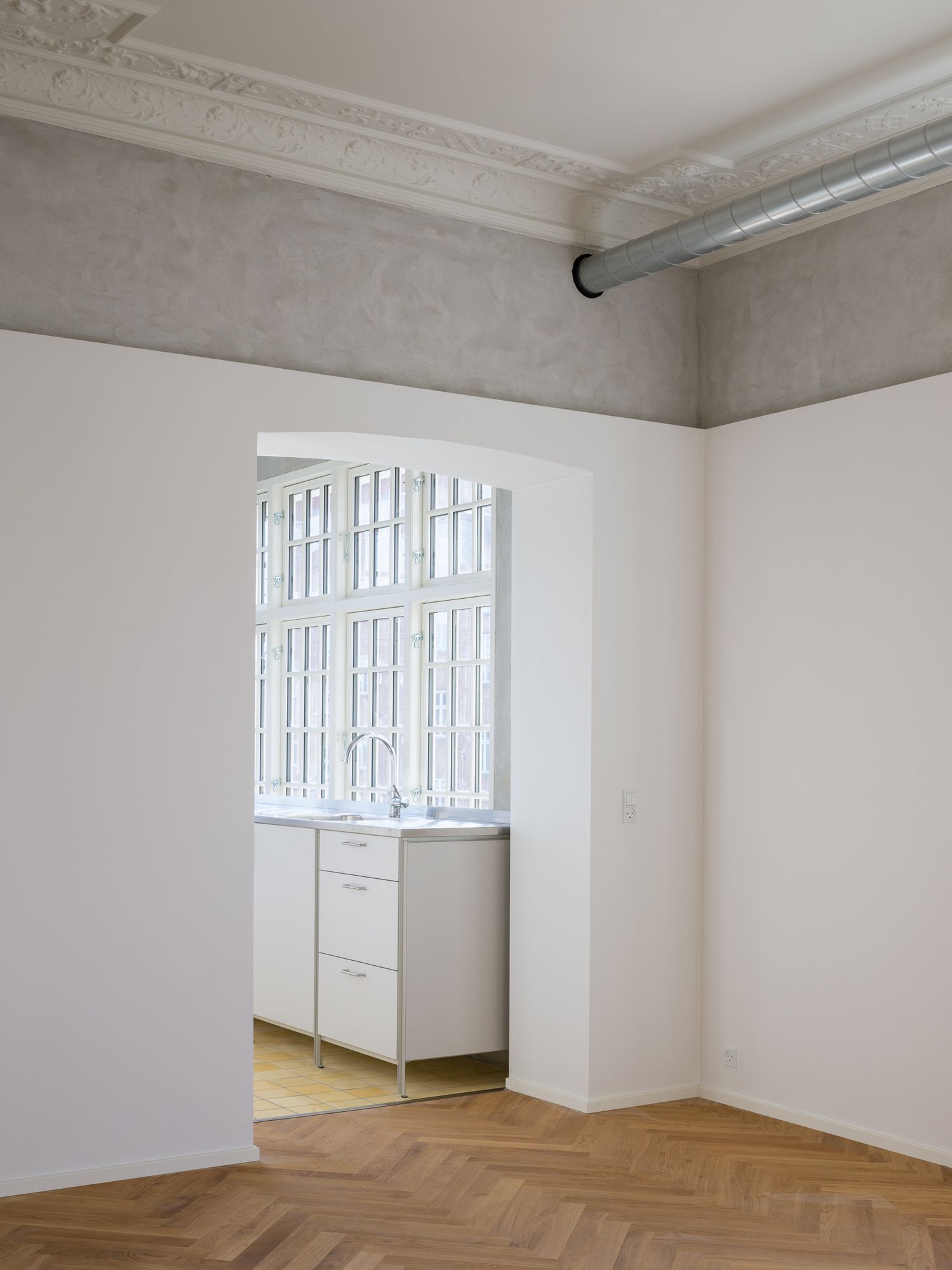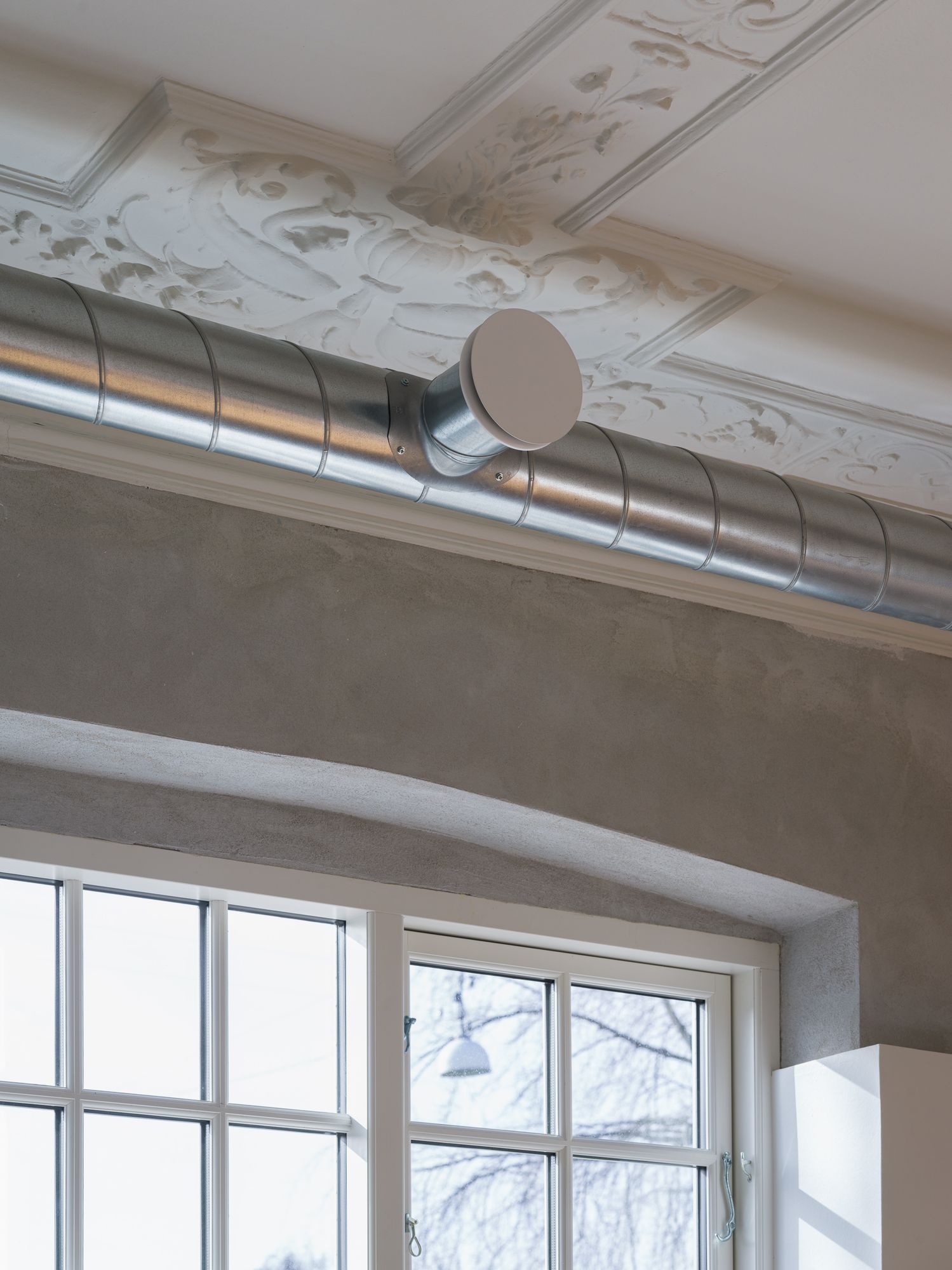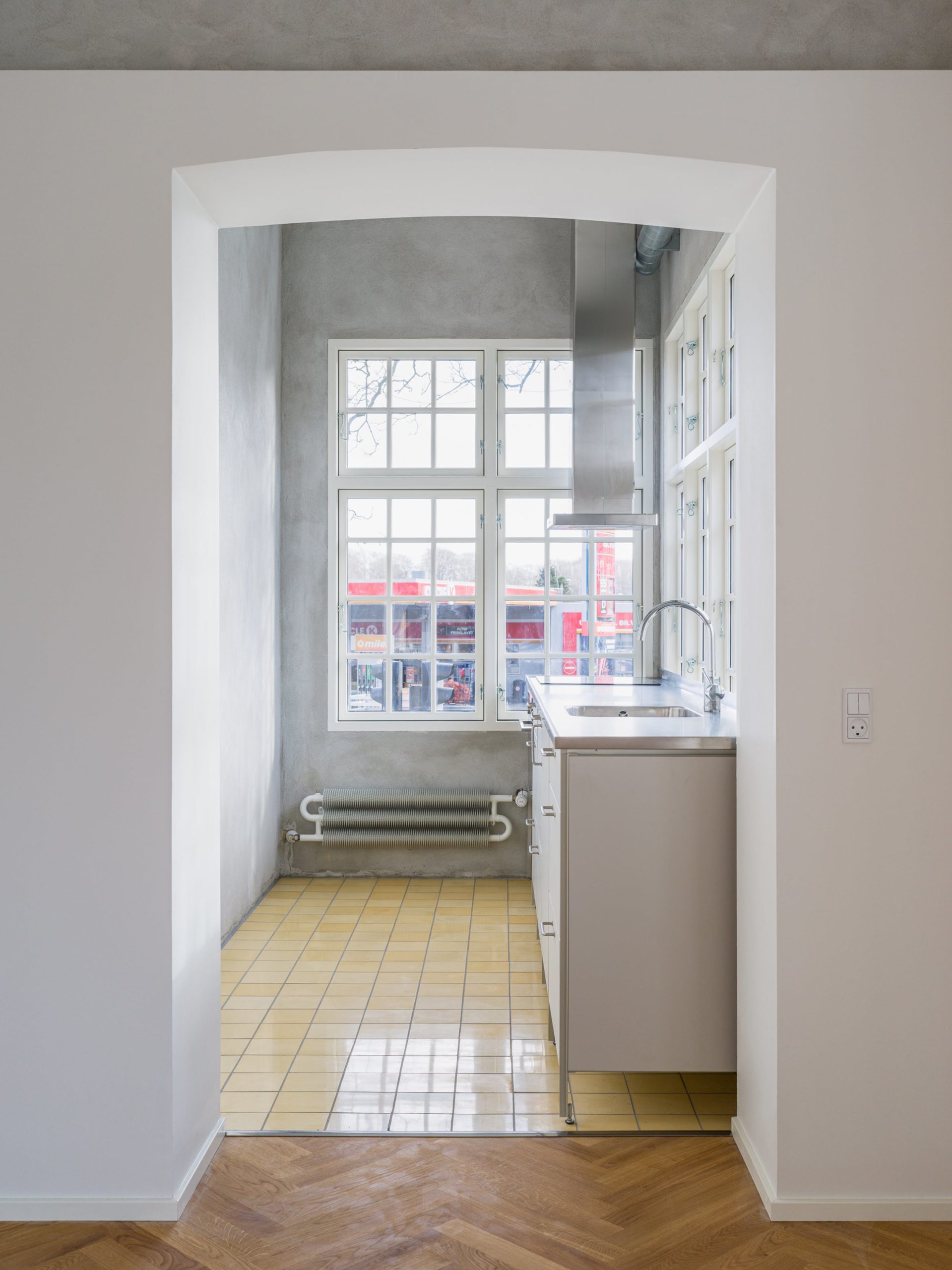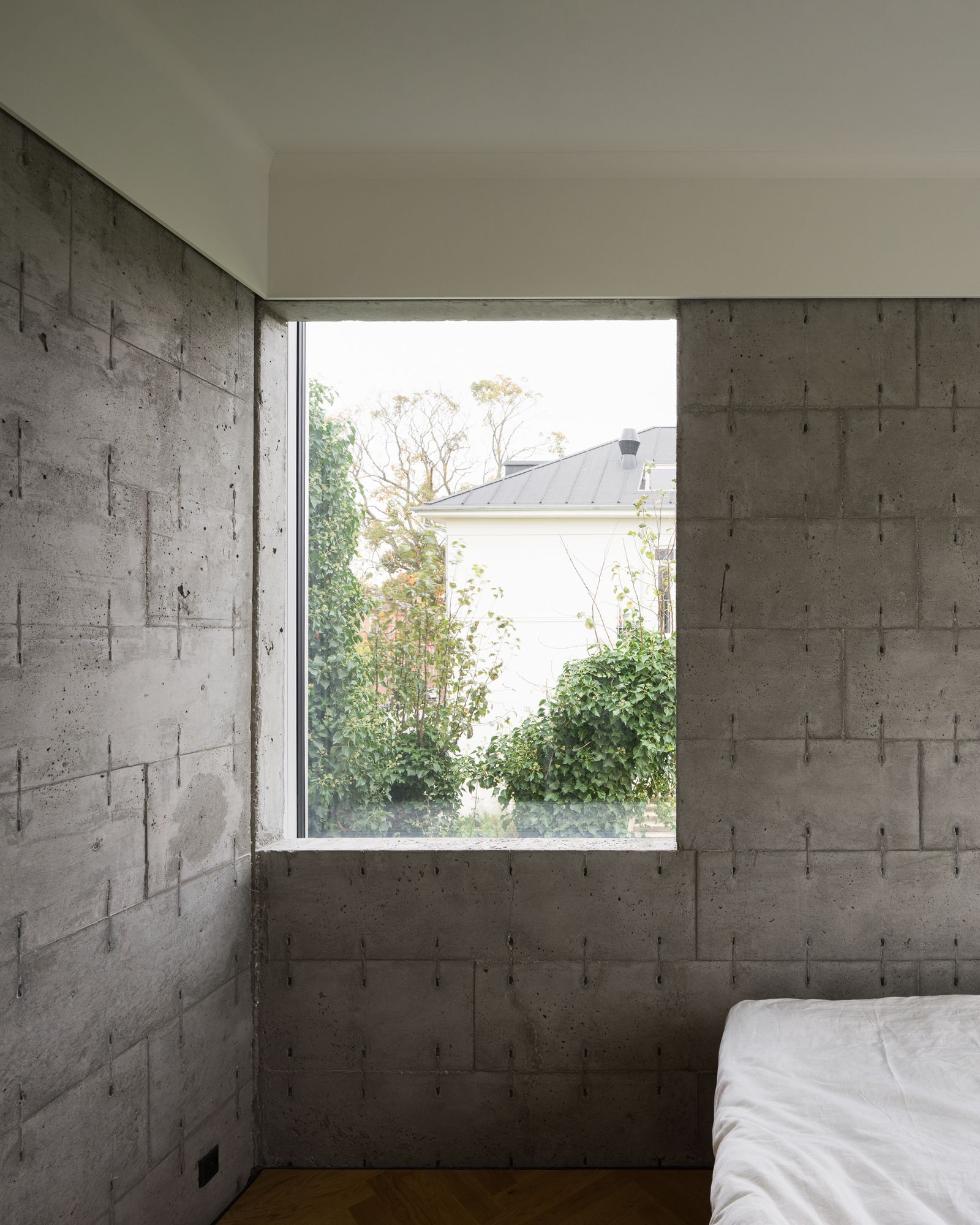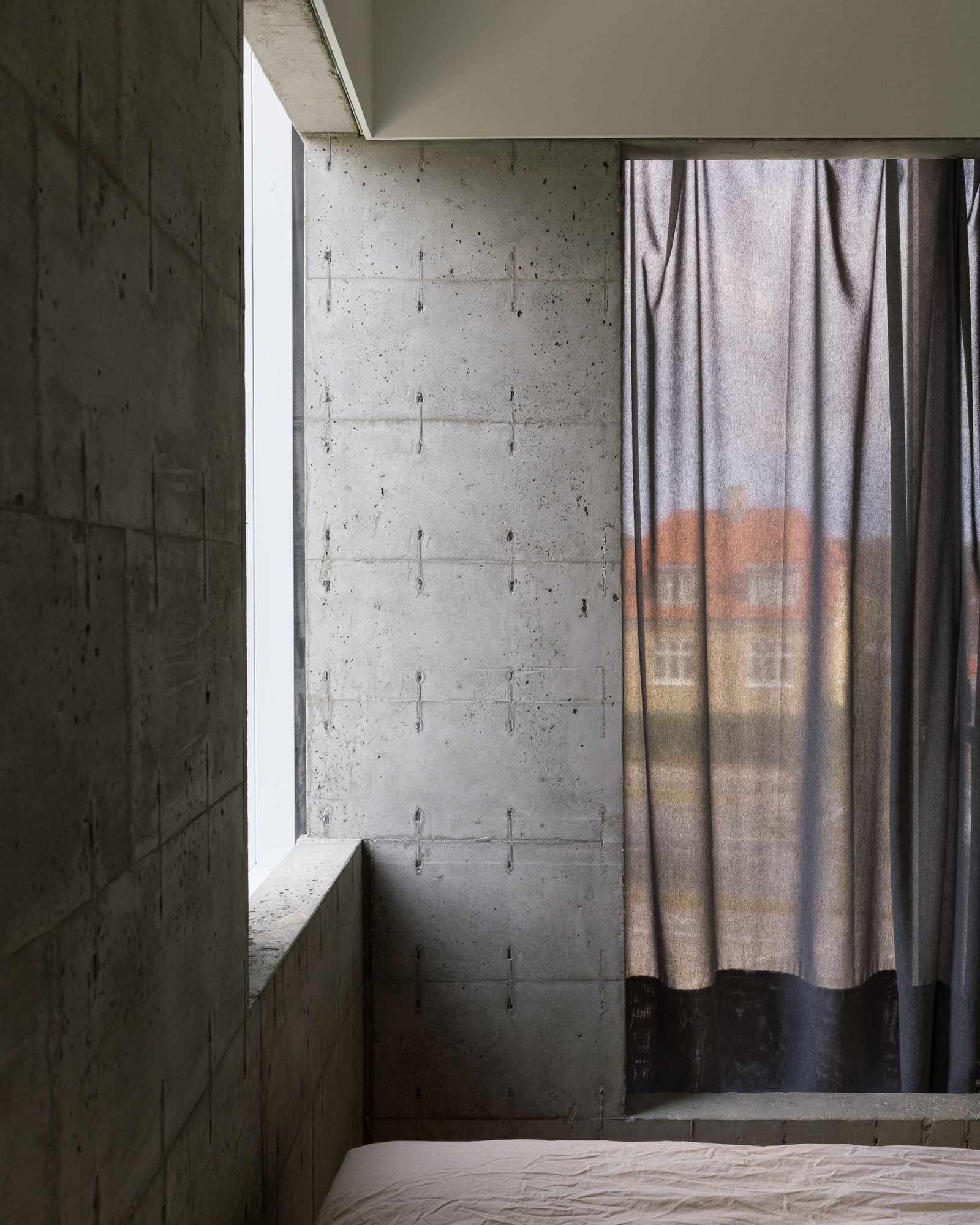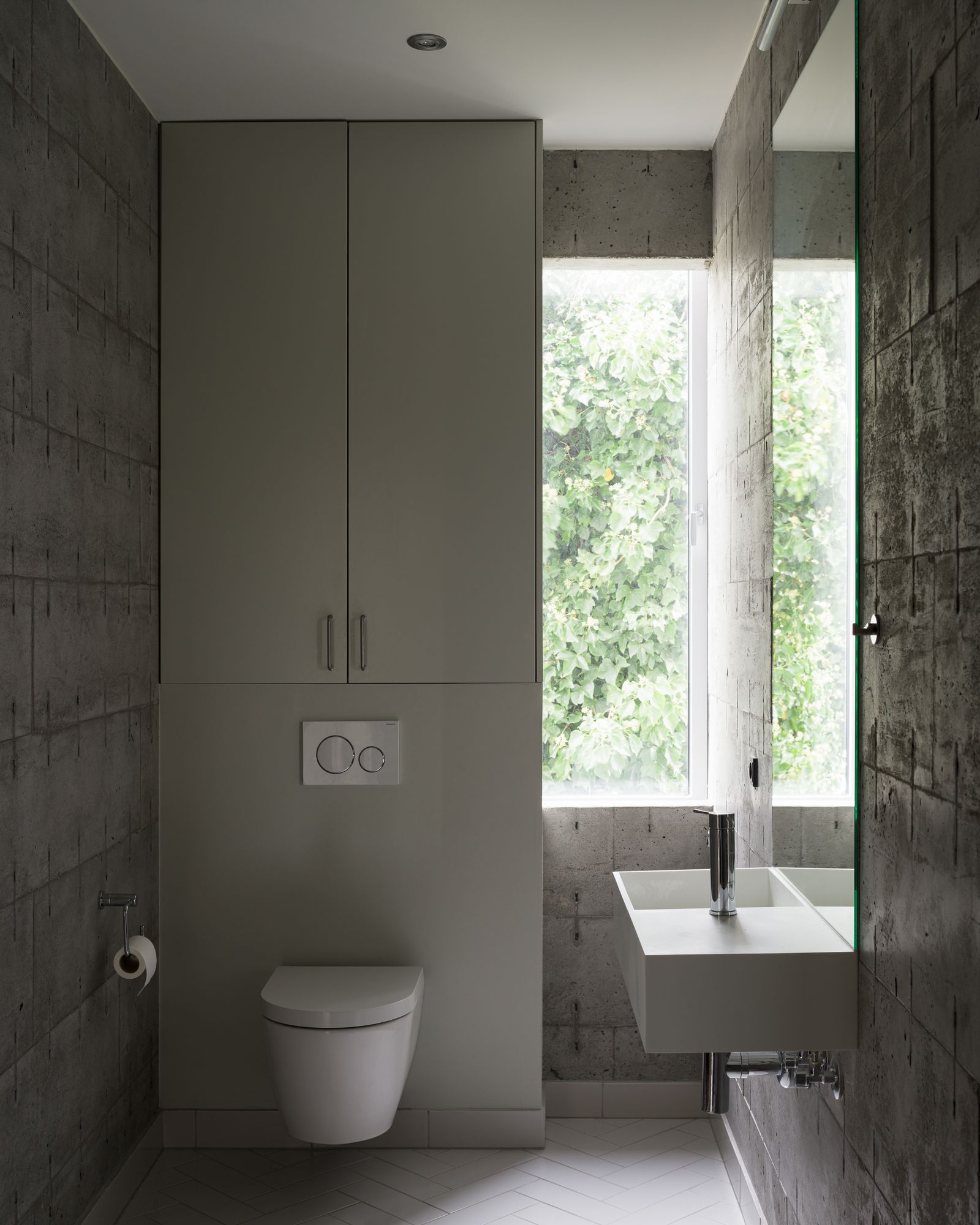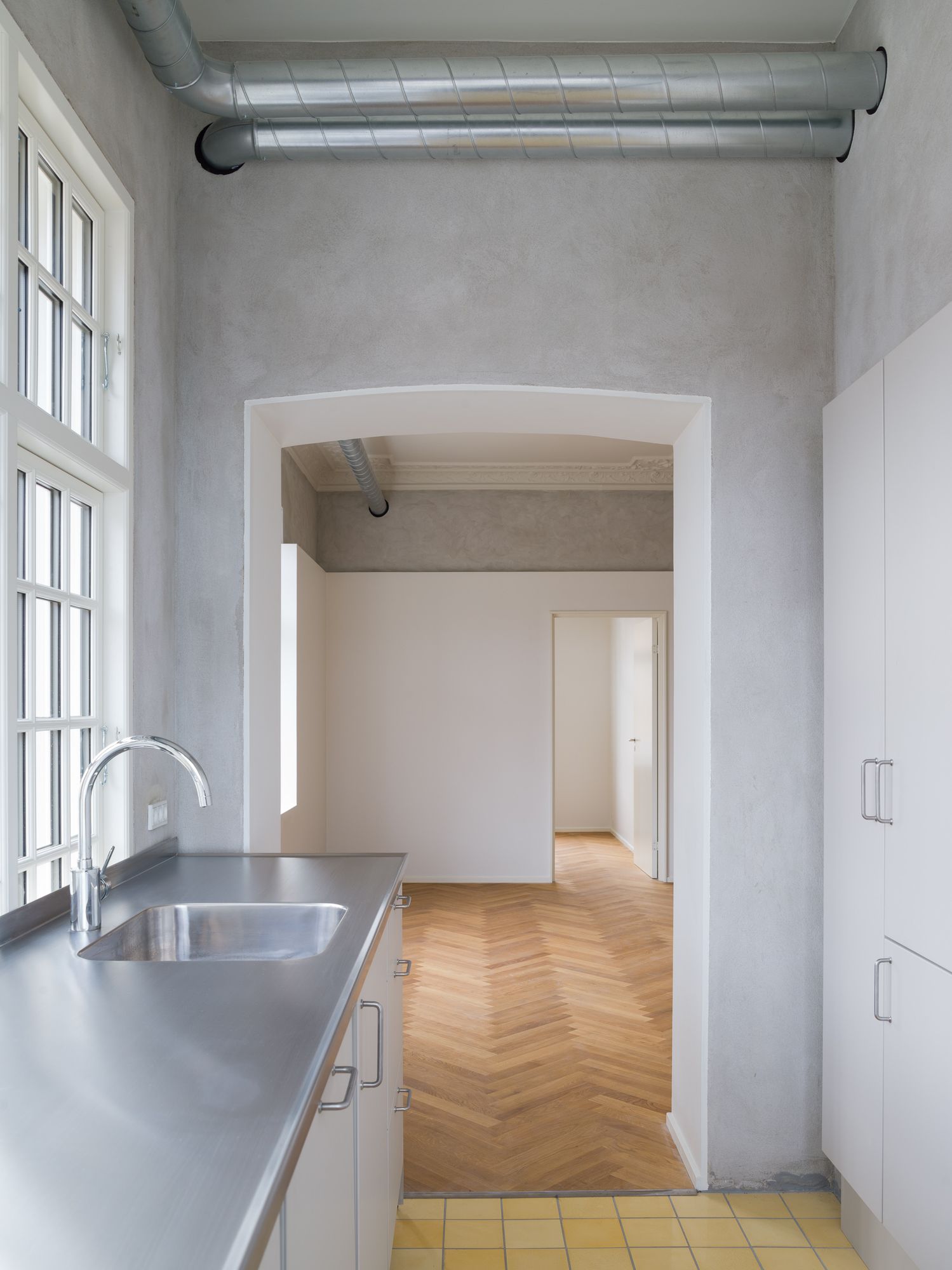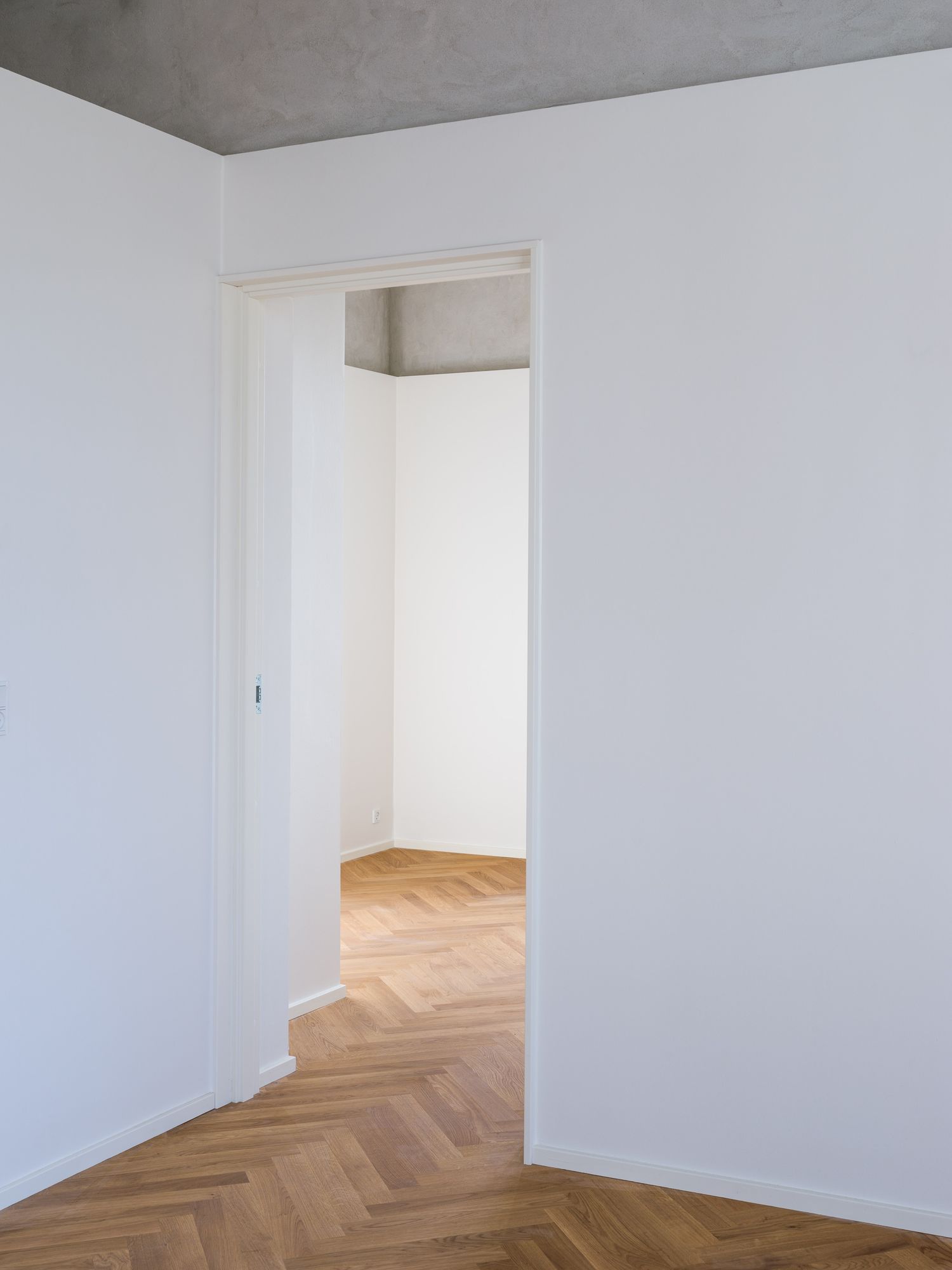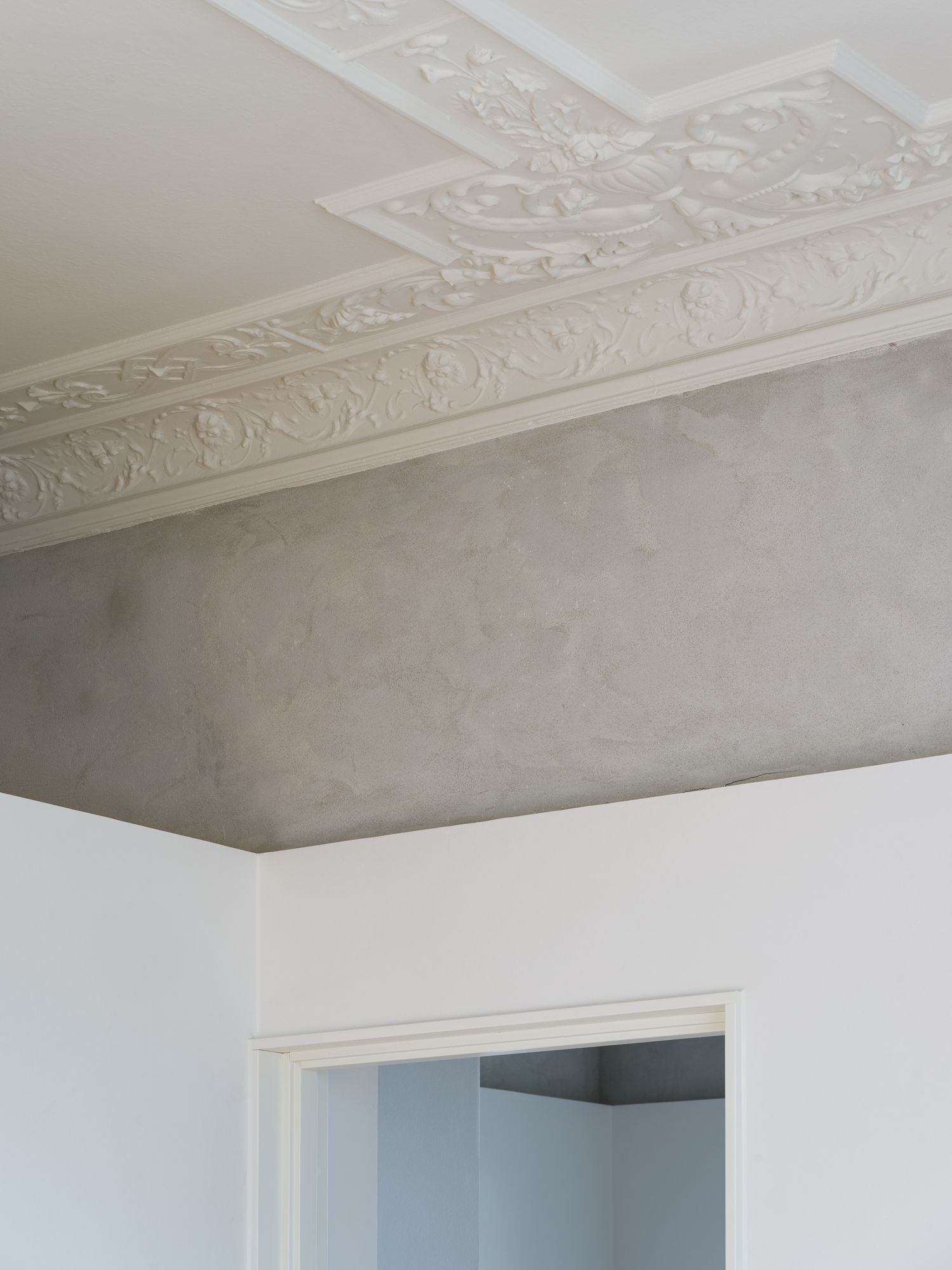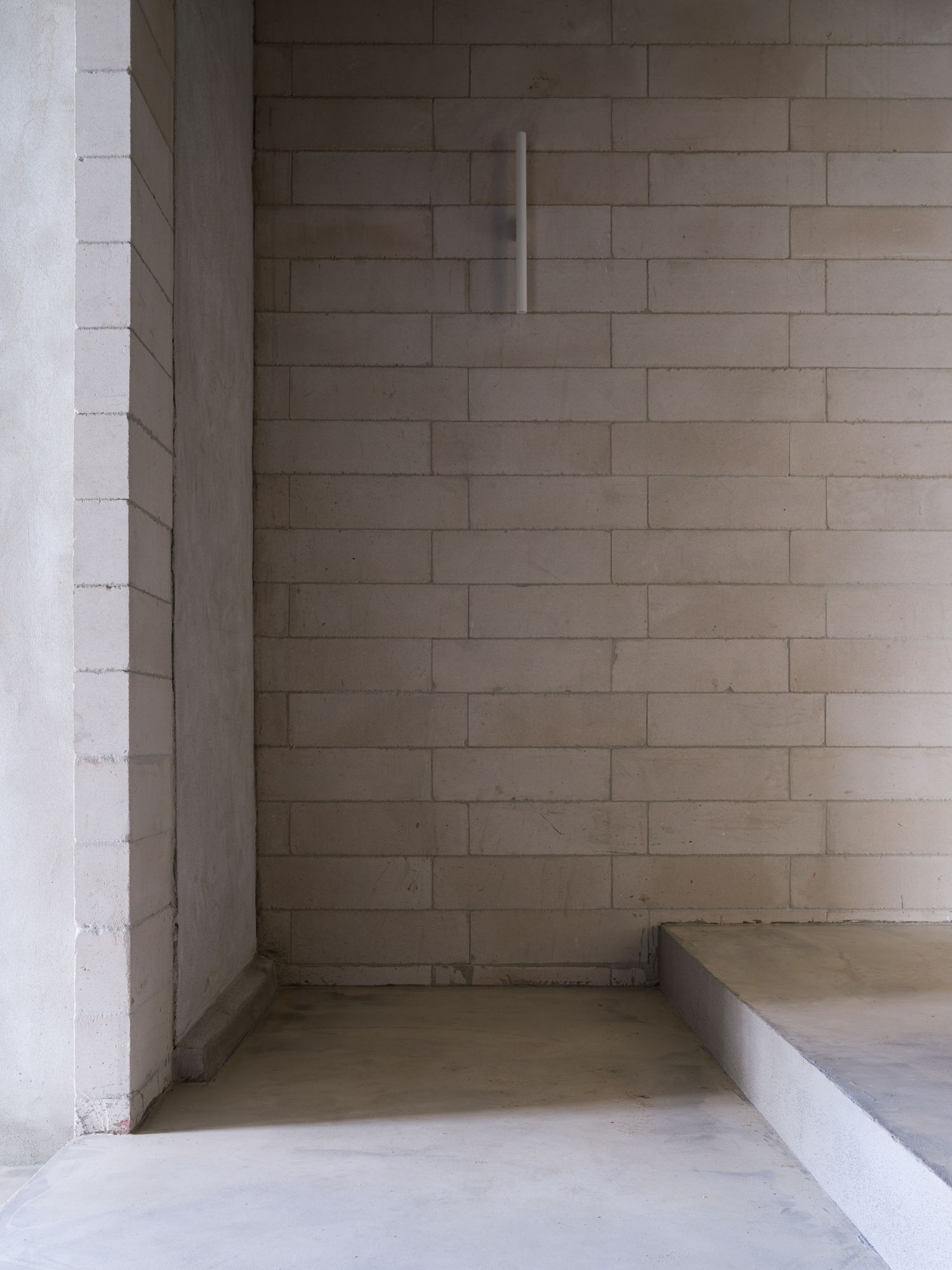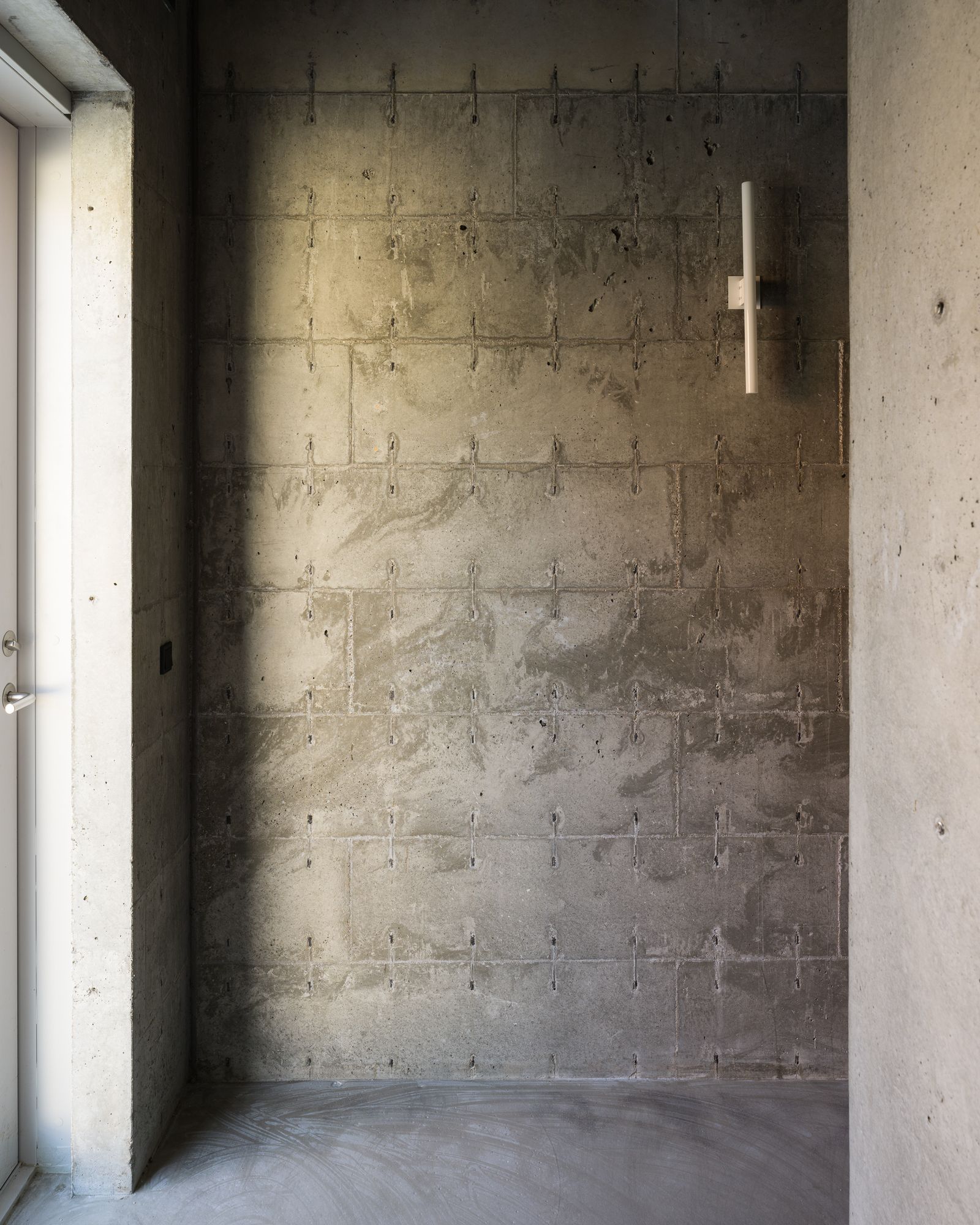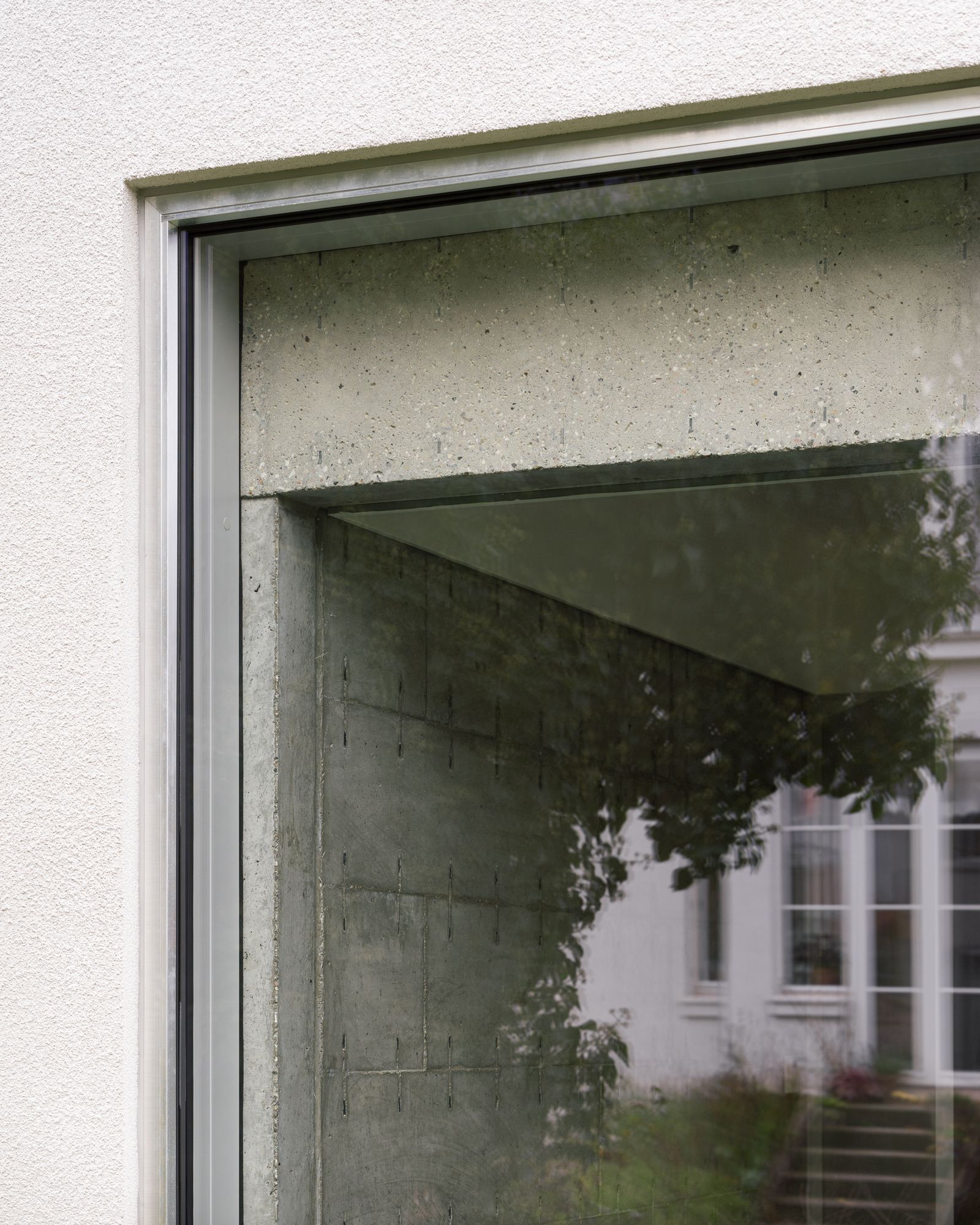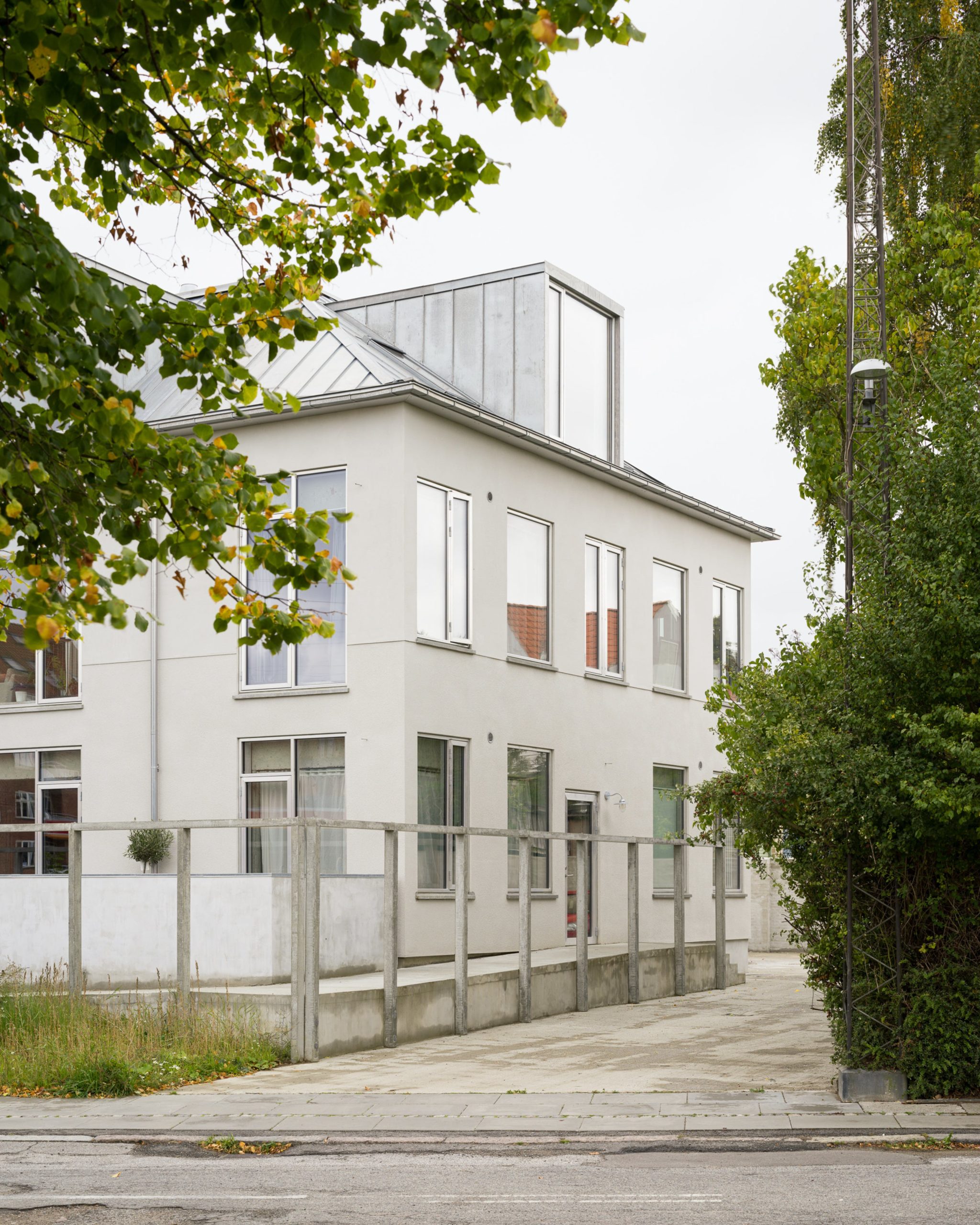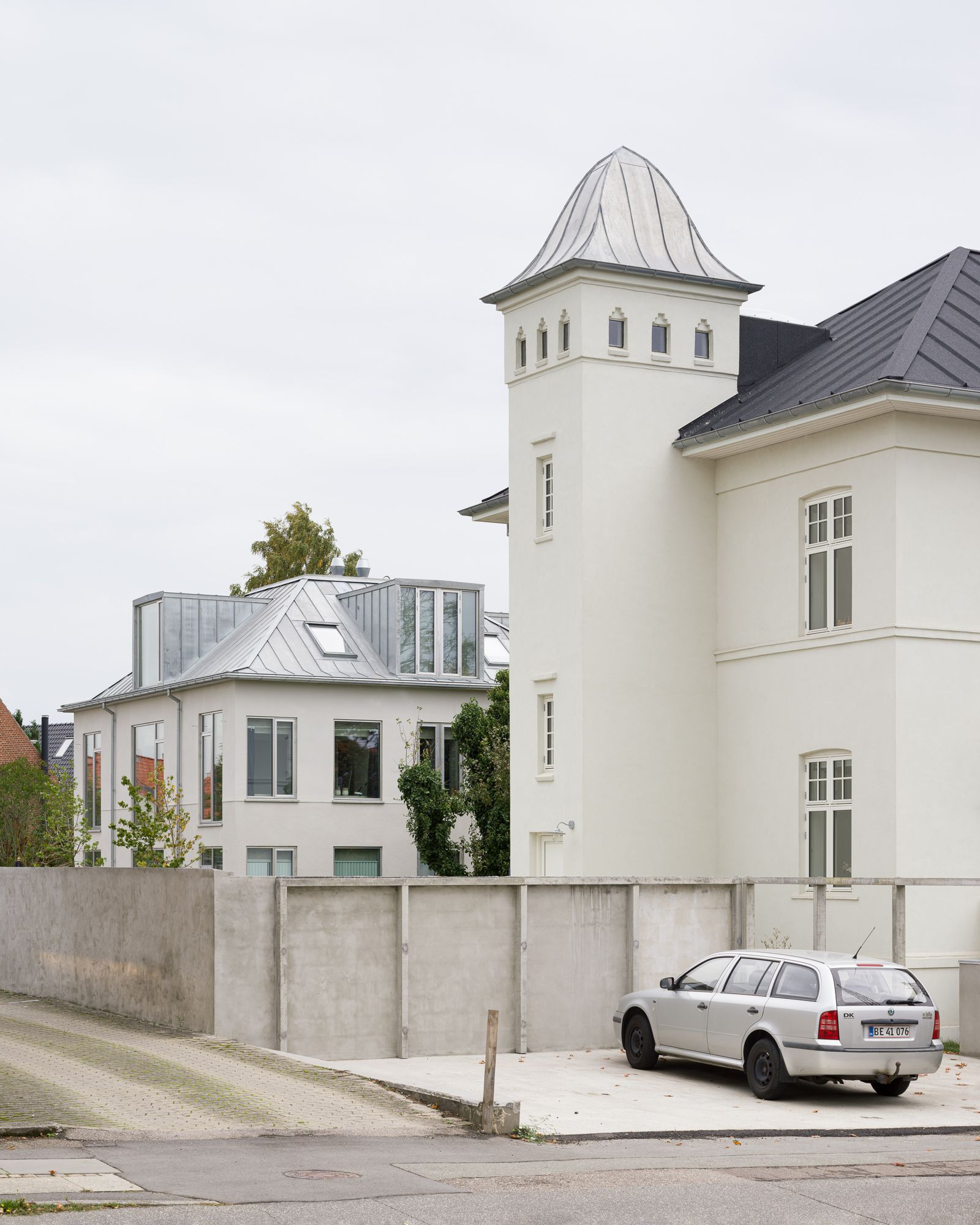Villa Landluft is a minimal residence located in Aarhus, Denmark, designed by Pihlmann Architects and Kim Lenschow. Villa Landluft” and its newly built neighbor building form a sibling relationship with over a hundred years between them, sharing motives and proportions, similarities and differences to bring new life to a problematic and forgotten corner of Aarhus city. The project consists of two buildings, one newly built, and the other a transformation of an old villa built in 1897. The original “Villa Landluft” was built outside of the city to escape the congested and polluted city center, and enjoy the fresh “country air”. After more than a hundred years, the city’s expansion had left the villa in a complicated urban crossroads, just outside of Aarhus dense inner city with a gas station and Aarhus most busy ring road as its closest neighbors. Its location in combination with its size (350m2+), left the villa undesirable for single private residents, and the house was left in decay.
The project proposed to transform the old villa, and add a new sibling building, dividing 11 new apartments between the two houses. All apartments have a connection to the shared common garden, circled in by a green fence that opens up toward the public footpaths surrounding the plot. Where the old building gets its exterior expression from the loadbearing brickwork, with brick arches and detailing surrounding the windows and openings, the new building interprets this by a “decoupling” of the insulating façade from the loadbearing structure. This gives a free façade, that can inherit proportions from the old building, while at the same time having window openings that fit proportionally to the interior space. A similar decoupling can be seen in the newly inserted bathrooms and entryway of the old building.
The bathrooms are inserted as boxes in the stucco decorated rooms, allowing the old plan of the house to be legible. In much the same manner, the installations and insulating layers added to the interior of the old building are left exposed in a pragmatic and no nonsense way, whereas in the newer sibling, installations are integrated and neatly fit in the rooms. The old stucco ceilings forms a motif for the hung ceilings in the new house that conceal ventilation and electrical wiring. The material palette is simple, and coherent between the two houses. Both are monochrome in grey and white, with herringbone oak flooring. The concrete formwork in the new house draws on similarities to the big format brickwork of the stairwell of the old and the stairs are both laser cut from black steel.
Photography by Hampus Berndtson
